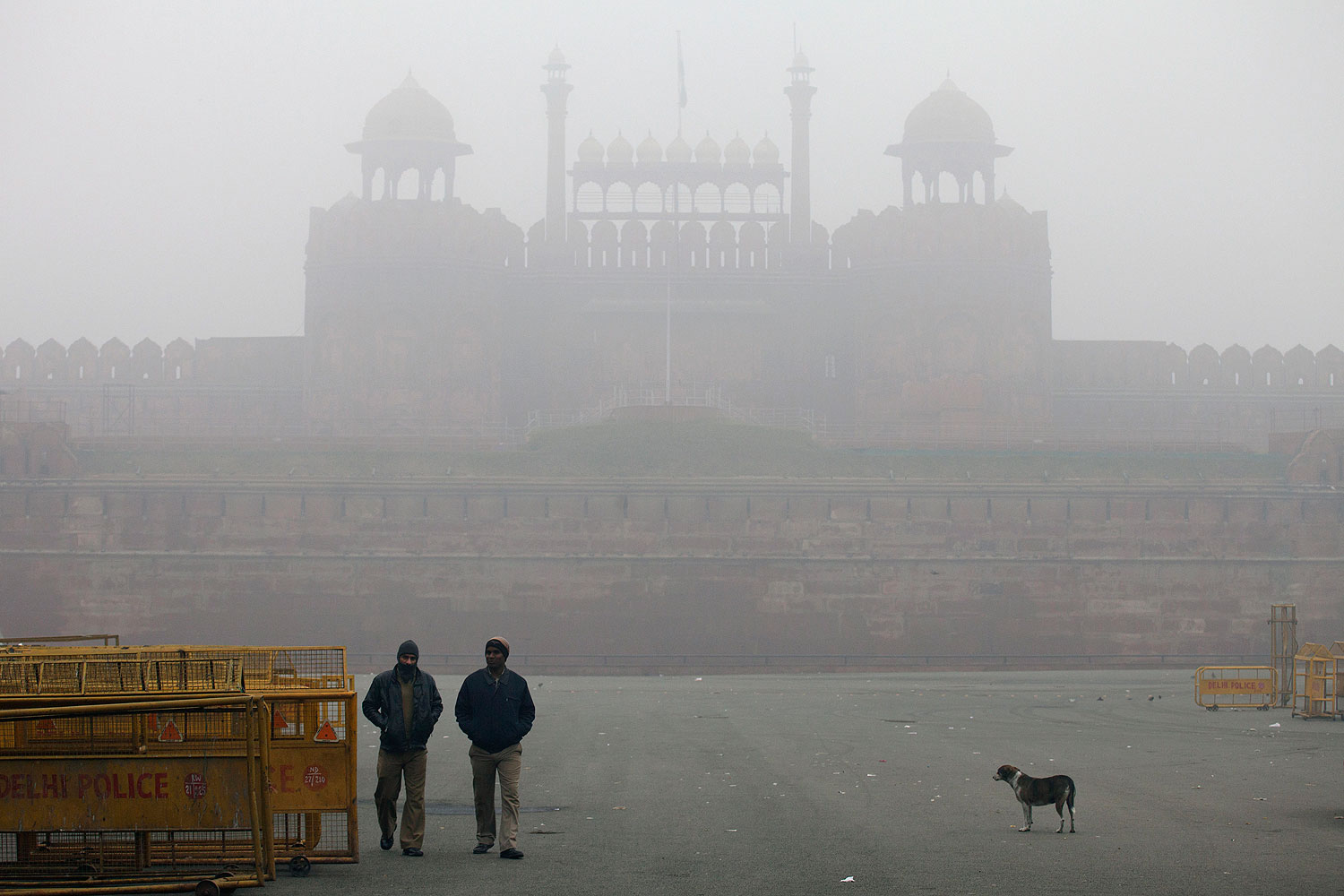
During the winter, many Delhi homes wake up to the comforting sound, and aroma, of ginger being ground in a mortar and pestle. The city’s favorite winter concoction of ginger and cardamom boiled with milk, sugar, black pepper and tea leaves isn’t just to ward off the cold but also a traditional remedy for boosting health.
“My entire family — especially my young children and parents — have been suffering from colds and coughs and wheezing,” says Poonam Bhatia, a mother of two who lives in the suburb of Noida. “We use home remedies like this to keep our immunity strong.”
This winter, it seems like more ginger than ever is being ground as Delhi struggles to cope with an appalling smog that has hung over the Indian capital since the beginning of January. Three-quarters of the noxious miasma is generated by the city’s almost 7.2 million vehicles. The rest comes from industrial emissions, construction work and the burning of agricultural waste.
The pollution in Delhi is now so severe that by some measures it is worse than in Beijing, which has long enjoyed notoriety as the world’s most polluted capital.
(MORE: India and China Spar for Most Polluted Capital City)
The Centre for Science and Environment, a Delhi-based environmental advocacy group, says that this winter Delhi’s average daily PM2.5 level — a measurement of very small airborne pollutant particles capable of penetrating deep into the lungs — was 240 micrograms per cu m, whereas in 2013 Beijing’s remained mostly below 250. Also, when Beijing’s PM2.5 reading crossed the 500 mark for the first time this year on Jan. 15, Delhi had already recorded eight such days.
The World Health Organization considers a safe level of PM2.5 to be 25.
For residents of Delhi, the smog causes major transport disruptions, with regular pileups on expressways and mile-long queues on major roads. Trains and flights are delayed for hours or canceled. “I had to wait for six hours at the airport a few weeks back,” says Pranati Chaudhuri, a retired professor who was returning to the capital from Kerala with her ailing husband. “We almost missed a medical appointment.”
More serious though is the health impact. A 2013 study found air pollution to be the fifth largest killer in India, causing more than 600,000 premature deaths — up six times from 2000. The study cited Delhi as one of the major trouble spots. “This year, there’s an unidentified virus going around which affects the lungs,” says one of Delhi’s top pulmonologists, Dr. Vivek Nangia. “These kind of respiratory ailments will only increase if we fail to clean up the city’s air soon.”
Although peak pollution levels have jumped 44% from last year, traditional immunity boosters like the ones Bhatia uses are all that most Delhi residents have to go on. “What other option do we have? We cannot stay indoors at all times. We have to go out to work, the children will have to go out to play or to schools,” she says.
(MORE: Unbreathable: Air Pollution Becomes a Major Global Killer)
Nangia warns elderly patients against early morning walks or outdoor exercise on the worst days. He also advises schools to start late, but the entreaties fall on deaf ears. There is scant awareness of the dangers of pollution, and there are no official warnings of severe pollution levels.
In Beijing, municipal authorities shut schools on the worst days, which protects the health of children but also sends a clear message to parents that pollution is a hazard to be taken seriously. In Delhi, by contrast, pollution tends to be seen by an inured population as just another inconvenience — a bit like bad weather. “I sometimes ask myself: If it’s hot, can I keep the children away? If it’s cold, can I keep the children away? If it’s pollution, can I keep the children away?” says Lata Vaidyanathan, principal of the city’s elite Modern School. “I think the answers don’t lie in all these — it lies in cleaning the air.”
At the moment, there are few voices calling for better air quality and the political parties still treat it as a fringe issue. Local authorities implemented Euro-3 emissions standards in 2005 and introduced a sweeping program of mandatory green fuel (compressed natural gas) for public transport, but neither of these measures — nor the extension of the metro network or the provision of cycle tracks — can compete with the hegemony of cars and trucks, which cause the bulk of the city’s smog.
“In a couple more years, this is going to become a emergency situation where we will have to tackle it on a war footing,” warns Nangia. “We are definitely heading towards that.”
Until then, you’ll be able to hear another sound in Delhi’s households every morning, besides the grinding of mortar and pestle — and that’s the sound of coughing.
MORE: Beijing Chokes on Record Pollution, and Even the Government Admits There’s a Problem
More Must-Reads From TIME
- The 100 Most Influential People of 2024
- The Revolution of Yulia Navalnaya
- 6 Compliments That Land Every Time
- What's the Deal With the Bitcoin Halving?
- If You're Dating Right Now , You're Brave: Column
- The AI That Could Heal a Divided Internet
- Fallout Is a Brilliant Model for the Future of Video Game Adaptations
- Want Weekly Recs on What to Watch, Read, and More? Sign Up for Worth Your Time
Contact us at letters@time.com